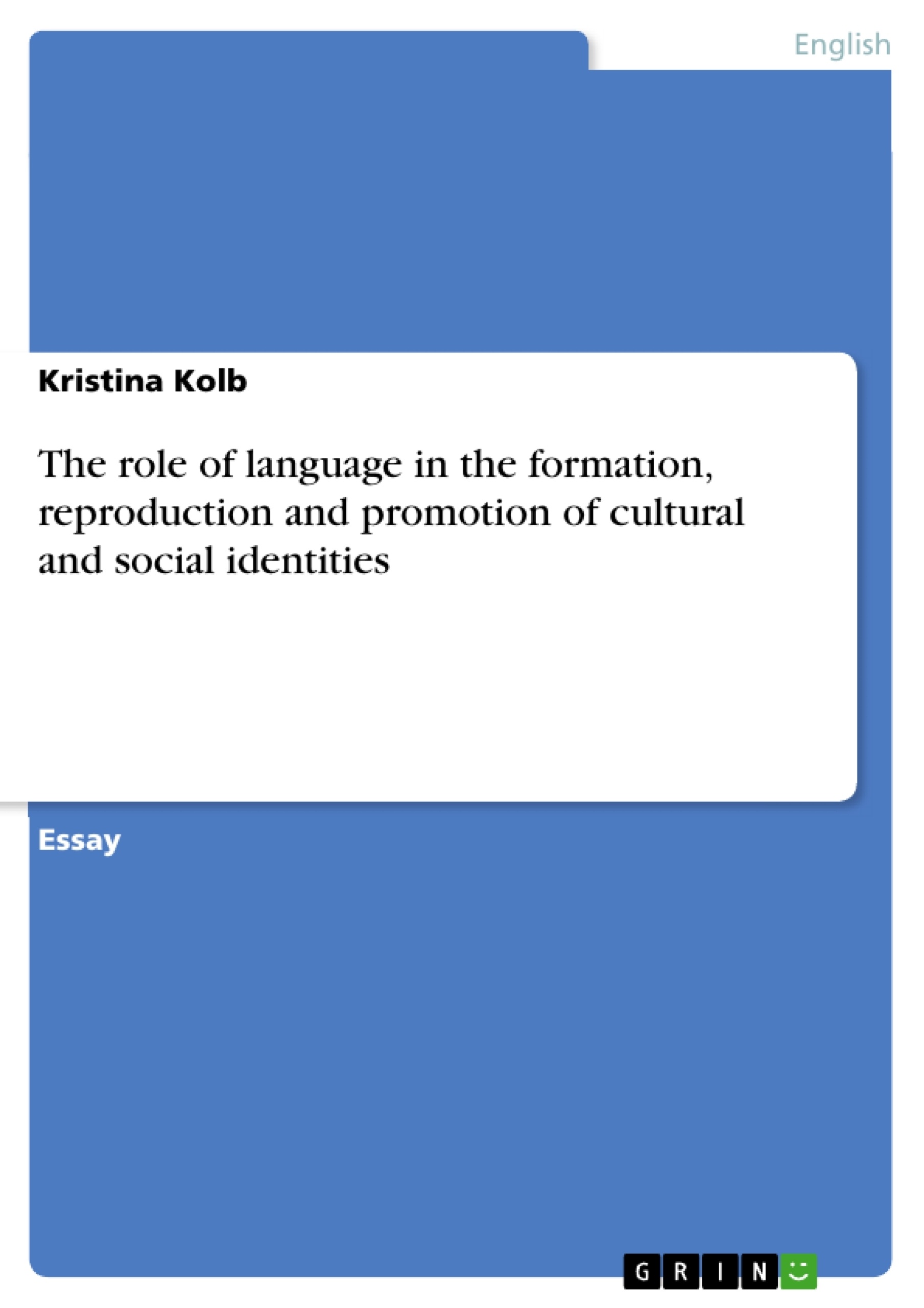According to structuralist and post-structuralist theories, identities are relational, and as such they are formed and shaped through communicative processes. In order to communicate, we need a common system of signs that can be understood by every member of the group, in everyday speech referred to as “language”. Although it is certainly true to say that language forms, reproduces and promotes identity, it must not be forgotten that identities are plural, intersect, interact and enter into conflict with each other, and language identity is no exception to this. Consequently, the relationship between language and identity, when taking a closer look at it, involves many different considerations and is not as clear-cut as one might anticipate.
Inhaltsverzeichnis (Table of Contents)
- The Role of Language in the Formation, Reproduction, and Promotion of Cultural and Social Identities
- Identity Formation Through Communication
- The Importance of Language in National Identity
- Language as a Tool for Nation-Building
- The Role of Education in Shaping National Identity
- The Impact of Language on Minority and Non-Official Languages
- Linguistic Hierarchy and its Impact on Identity
- Language, Identity, and Social Conflict
- Multilingualism and Identity Formation
- Translation and the Challenges of Cultural Difference
Zielsetzung und Themenschwerpunkte (Objectives and Key Themes)
This text explores the complex relationship between language and identity, examining how language shapes, reproduces, and promotes cultural and social identities. It delves into the role of language in the formation of national identities, particularly in the context of nation-building processes. Additionally, the text considers the impact of language on minority and non-official languages, highlighting how linguistic hierarchy can influence identity formation.
- The role of language in identity formation
- The relationship between language and national identity
- The impact of linguistic hierarchy on identity
- The influence of language on social conflict
- The role of translation in understanding cultural differences
Zusammenfassung der Kapitel (Chapter Summaries)
This text examines the role of language in the formation, reproduction, and promotion of cultural and social identities. It argues that identities are relational and shaped through communicative processes, with language serving as a common system of signs. The text then explores the historical and contemporary uses of language in nation-building, highlighting its role in promoting national identity. It emphasizes the importance of education in shaping national identity and the challenges faced by minority and non-official languages. The text concludes by analyzing the influence of linguistic hierarchy on identity and the complex relationship between language, identity, and social conflict.
Schlüsselwörter (Keywords)
This text focuses on the interplay between language and identity, examining key concepts such as national identity, linguistic hierarchy, minority languages, social conflict, and translation. It explores how language serves as a tool for nation-building and its impact on the formation and promotion of cultural and social identities.
- Quote paper
- Kristina Kolb (Author), 2003, The role of language in the formation, reproduction and promotion of cultural and social identities, Munich, GRIN Verlag, https://www.grin.com/document/139879



